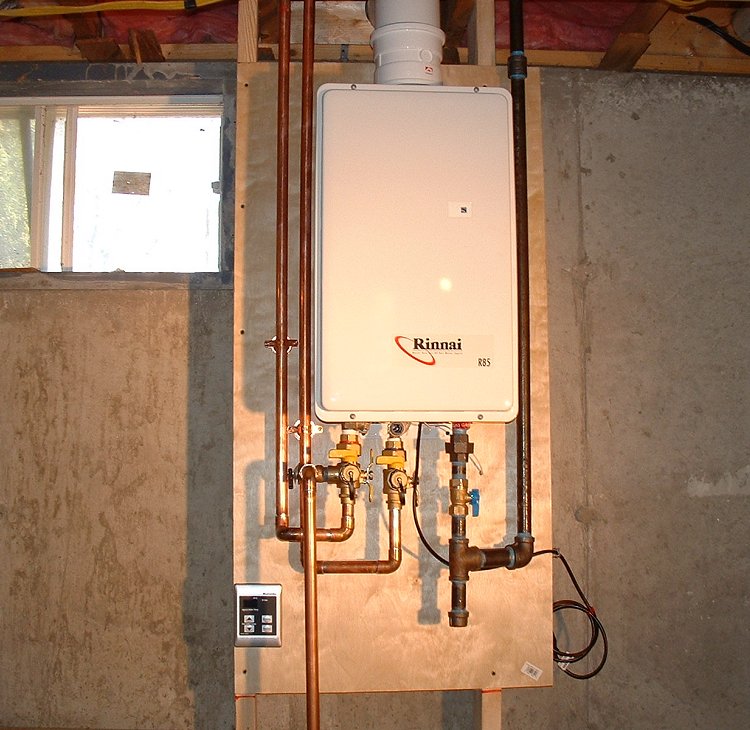
How They Work
Typically, tankless water heaters provide hot water at a rate of 2–5 gallons (7.6–15.2 liters) per minute. Gas-fired tankless water heaters produce higher flow rates than electric ones. Sometimes, however, even the largest, gas-fired model cannot supply enough hot water for simultaneous, multiple uses in large households. For example, taking a shower and running the dishwasher at the same time can stretch a tankless water heater to its limit. To overcome this problem, you can install two or more tankless water heaters. You can also install separate tankless water heaters for appliances — such as a clothes washer or dishwater — that use a lot of hot water in your home. However, additional water heaters will cost more and may not be worth the additional cost.
Other applications for demand water heaters include the following:
- Remote bathrooms or hot tubs
- Booster for appliances, such as dishwashers or clothes washers
- Booster for a solar water heating system.
Advantages and Disadvantages
For homes that use 41 gallons or less of hot water daily, demand water heaters can be 24%–34% more energy efficient than conventional storage tank water heaters. They can be 8%–14% more energy efficient for homes that use a lot of hot water — around 86 gallons per day. In some cases you may be able to achieve even greater energy savings if you install a demand water heater at each hot water outlet.
The initial cost of a tankless water heater is greater than that of a conventional storage water heater, but tankless heaters will typically last longer and have lower operating and energy costs, which could offset their higher purchase price. Most tankless heaters have a life expectancy of more than 20 years. They also have easily replaceable parts that may extend their life by many more years. In contrast, storage water heaters last 10–15 years.
Tankless water heaters avoid the standby heat losses associated with storage water heaters. However, although gas-fired tankless water heaters tend to have higher flow rates than electric ones, they can waste energy if they have a pilot light. This can sometimes offset the elimination of standby energy losses when compared to a storage water heater. In a gas-fired storage water heater, the pilot light heats the water in the tank so the energy isn’t wasted.
The cost of operating a pilot light in a tankless unit varies from model to model. Review the manufacturer’s literature to determine how much gas the pilot light uses for the model you’re considering. Look for models that have an intermittent ignition device (IID) instead of a standing pilot light. This device resembles the spark ignition device on some natural gas furnaces and kitchen ranges and ovens.
